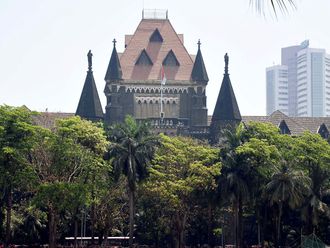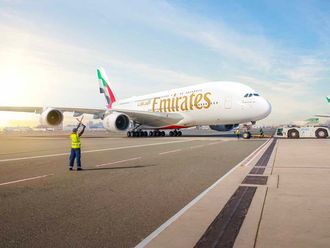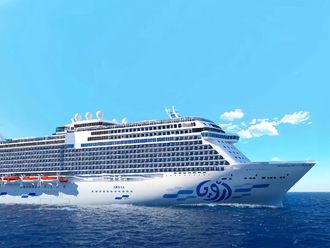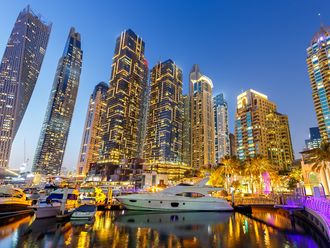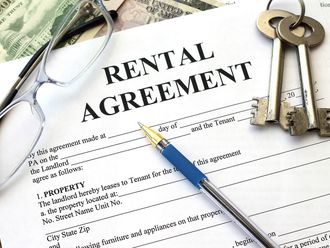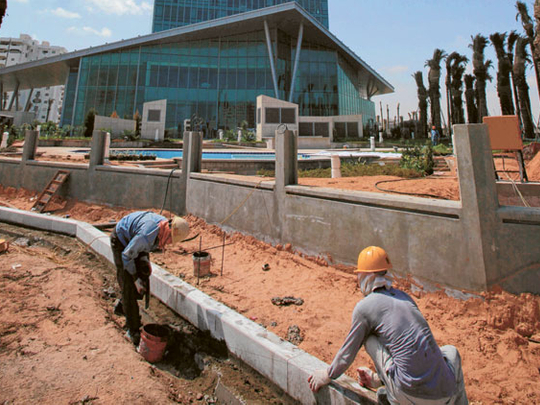
Dubai: The turmoil in Libya has shed a light on the country's highly undiversified economy which is almost entirely dependent on oil exports. Libya, as an Opec member, is holding the largest proven oil reserves in Africa which contribute to practically all export earnings and around 55 per cent of the country's gross domestic product of about $96.1 billion in 2001.
The centrally planned economy under Muammar Gaddafi's rule has so far led to a concentration of the oil sector in state-owned companies despite promises to privatise the sector further. The state-owned National Oil Corporation dominates Libya's oil industry, along with smaller subsidiaries, which combined account for around 50 per cent of the country's oil output. Among its subsidiaries, the largest oil producer is the Waha Oil Company, the Arabian Gulf Oil Company, Zueitina Oil Company, and the Sirte Oil Company.
Libya's production averaged 1.5 million barrels per day in the first ten months of 2010, according to Nancy Fahim, economist at Standard Chartered Bank, UAE. Fahim said that the country was so far exceeding its Opec quota of about 96,000 bpd, however, any increase in production will be limited to its current 1.8 million barrel per day capacity. Despite this constraint, Libya has had an ambitious goal of ramping up output to 3 million barrel per day by 2015 and 3.5 million barrel per day by 2020, and significant investments will be needed to expand capacity, said Fahim.
Even before the unrest in Libya, constantly changing foreign investment laws have prompted some international companies to halt or stall investment plans in the country, which means that new discoveries have been limited. The targeted output by 2020 therefore will be difficult to achieve, Fahim added, and will be unlikely to exceed 2.5 million barrels per day by 2015, given normal circumstances.
Amid the current chaos, oil deliveries are halted and refineries have shut down.
Simon Henderson, a Middle East economic expert at the Washington Institute for Near East Policy, said that "at the moment, all oil exports seem to have stopped. If the situation stabilizes, oil will start flowing again."
Currently it cannot be said what happens to the oil industry in Libya after the Gaddafi regime comes to an end. Gaddafi has declared force majeure on oil exports on Tuesday last week, which allows him to break commitments to oil buyers from abroad.
Energy revenues
The revenues from the energy sector coupled with a small population gave Libya one of the highest per capita GDPs in Africa, so at the first sight it is interesting that the uprising has been so widespread and has been supported by large sectors of the Libyan society.
The reason behind that is that little of the oil income flowed down to the lower orders of society or has benefitted the vast number of unemployed young people as job opportunities in the oil sector remain limited.
The Gaddafi regime is criticised to have missed to improve the country's educational system, which has led to a mismatch between with market demand and employment opportunities for Libyans. While a large pool of expatriate workers is employed in Libya's oil industry, unemployment among the younger population is estimated at up to 50 per cent, according to figures compiled by the CIA World Fact Book. Besides that, Libya has also attracted a high number of less skilled immigrants for manual labour tasks from North African countries as well as from Turkey, India, the Philippines, Thailand, Vietnam, Poland, Chad, Sudan, Bosnia and Herzegovina and Central Asian nations, earning average wages higher than those for Libyan nationals, of which many remain employed by the public sector only. Expats currently represent 20 per cent of the labour force in Libya.
Apart from oil production, hydrocarbon and mining remain two dominant sectors, which include the production of petrochemicals, iron, steel, and aluminium, while other manufacturing and also construction is still underdeveloped and effort to diversify the economy towards this sectors remains a long-term issue.
Agriculture is a problematic sector too, as climatic conditions and poor soils severely limit Libya's agricultural output, and the country is forced to import about 75 per cent of its food.
Improvement of agricultural production is limited due to poor water resources, and due to the fact that the government obviously has not declared this a primary issue. There is no Ministry of Agriculture in Libya, and the sector is overseen by a government inspector only. Main agricultural products are wheat, barley, olives, dates, citrus, vegetables, peanuts, soyabeans and cattle.
Water source
One bigger agricultural project is situated in the Al Khufrah Oasis, where ground water can be used. The most important water source for the entire country comes from the Great Man-Made River irrigation project, a network of water pipelines that supports larger cities and settlements in the Sahara desert. To meet growing water demands, Libya was also investing in desalination projects.
The financial sector remains underdeveloped in the sense that public banks are all owned by the Central Bank of Libya which creates a conflict of interest between ownership and regulation.
Areas such as credit, governance, risk management and other control systems need improvement, according to international experts.





